 Calibration is the process used to determine the amount of chemical material applied per unit area. Equipment for applying liquid and dry materials must be accurately calibrated for pesticides to work efficiently and to avoid crop injury or death. The pesticide label is a legal document and must be followed. Properly calibrating equipment ensures the product is being applied as specified on the label and that environmental contamination will be minimized. This 6-page fact sheet discusses some methods for calibration of sprayers and dry material spreaders and includes information about calibration to help growers properly apply pesticides. written by M. R. Miller and P. J. Dittmar, and published by the UF Department of Horticultural Sciences, May 2013.
Calibration is the process used to determine the amount of chemical material applied per unit area. Equipment for applying liquid and dry materials must be accurately calibrated for pesticides to work efficiently and to avoid crop injury or death. The pesticide label is a legal document and must be followed. Properly calibrating equipment ensures the product is being applied as specified on the label and that environmental contamination will be minimized. This 6-page fact sheet discusses some methods for calibration of sprayers and dry material spreaders and includes information about calibration to help growers properly apply pesticides. written by M. R. Miller and P. J. Dittmar, and published by the UF Department of Horticultural Sciences, May 2013.
http://edis.ifas.ufl.edu/hs1220
Category: Crops
Factors Affecting Herbicide Use in Fruits and Vegetables (HS1219)
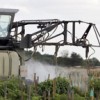 Proper herbicide application is critical for fruit and vegetable growers to effectively manage weeds. Improper herbicide application may lead to herbicide loss from the targeted area, increased crop injury, and reduced weed control. Growers need to take into account a number of factors before and during application in any crop to ensure the herbicide is effective. Herbicide efficacy is greatly affected by timing and environmental conditions. Although complete weed control is not always possible, even slight reductions in weed populations can greatly enhance productivity in fruit and vegetable crops. This 4-page fact sheet reviews techniques and processes to help growers properly apply herbicides. Understanding the processes and applying the following techniques will help to increase the overall efficacy of herbicides in fruit and vegetable production. Written by C. E. Rouse and P. J. Dittmar, and published by the UF Department of Horticultural Sciences, May 2013.
Proper herbicide application is critical for fruit and vegetable growers to effectively manage weeds. Improper herbicide application may lead to herbicide loss from the targeted area, increased crop injury, and reduced weed control. Growers need to take into account a number of factors before and during application in any crop to ensure the herbicide is effective. Herbicide efficacy is greatly affected by timing and environmental conditions. Although complete weed control is not always possible, even slight reductions in weed populations can greatly enhance productivity in fruit and vegetable crops. This 4-page fact sheet reviews techniques and processes to help growers properly apply herbicides. Understanding the processes and applying the following techniques will help to increase the overall efficacy of herbicides in fruit and vegetable production. Written by C. E. Rouse and P. J. Dittmar, and published by the UF Department of Horticultural Sciences, May 2013.
http://edis.ifas.ufl.edu/hs1219
La Seguridad en la Produccion de Alimentos en la Granja – Resumen de Buenas Practicas Agricolas (FSHN0601S/FS230)
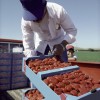 Las Buenas Prácticas Agrícolas (BPA) y Buenas Prácticas de Manejo (BPM) cubren los procedimientos generales que los productores, empacadores y procesadores de frutas y verduras frescas deben seguir para garantizar la seguridad de sus productos. Las BPA son usadas antes de la cosecha (es decir, en el campo), mientras que las BPM se utilizan luego de la cosecha, incluyendo el embalaje y envío. El objetivo de este panfleto es revisar los principios generalmente reconocidos como BPA en la producción de frutas y verduras frescas, sobre todo a nivel de fincas o granjas. Otros panfletos de la Extensián Cooperativa de la Florida sobre la Inocuidad de los Alimentos cubren los principios individuales en detalle, con énfasis especial en los cultivos y el manejo apropiado de los mismos en la Florida.
Las Buenas Prácticas Agrícolas (BPA) y Buenas Prácticas de Manejo (BPM) cubren los procedimientos generales que los productores, empacadores y procesadores de frutas y verduras frescas deben seguir para garantizar la seguridad de sus productos. Las BPA son usadas antes de la cosecha (es decir, en el campo), mientras que las BPM se utilizan luego de la cosecha, incluyendo el embalaje y envío. El objetivo de este panfleto es revisar los principios generalmente reconocidos como BPA en la producción de frutas y verduras frescas, sobre todo a nivel de fincas o granjas. Otros panfletos de la Extensián Cooperativa de la Florida sobre la Inocuidad de los Alimentos cubren los principios individuales en detalle, con énfasis especial en los cultivos y el manejo apropiado de los mismos en la Florida.
This 3-page fact sheet was written by Federico G. Caro, Renee Goodrich Schneider, Keith R. Schneider, y Douglas L. Archer, and published by the UF Department of Food Science and Human Nutrition, May 2013.
http://edis.ifas.ufl.edu/fs230
Powdery Mildew of Strawberries (PP208/PP129)
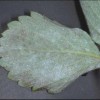 Powdery mildew occurs in most areas of the world where strawberries are grown, infecting leaves, flowers, and fruit. Infected transplants are normally the primary source of inoculum for fruiting fields in Florida, but even disease-free fields can become infected by conidia blown in from neighboring fields. Fields with susceptible cultivars should be surveyed regularly for powdery mildew, especially early in the season. Usually, controlling foliar infection helps to prevent fruit infection. This 4-page fact sheet was written by N. A. Peres and J. C. Mertely, and published by the UF Department of Plant Pathology, May 2013.
Powdery mildew occurs in most areas of the world where strawberries are grown, infecting leaves, flowers, and fruit. Infected transplants are normally the primary source of inoculum for fruiting fields in Florida, but even disease-free fields can become infected by conidia blown in from neighboring fields. Fields with susceptible cultivars should be surveyed regularly for powdery mildew, especially early in the season. Usually, controlling foliar infection helps to prevent fruit infection. This 4-page fact sheet was written by N. A. Peres and J. C. Mertely, and published by the UF Department of Plant Pathology, May 2013.
http://edis.ifas.ufl.edu/pp129
Pesticide Options for Insect, Mite, and Mollusk Management in Commercial Strawberry Production in Florida (ENY689/IN486)
 Effective management of arthropod and gastropod pests of strawberry is critical to the profitability of the industry and requires that pests be detected in a timely manner through systematic scouting. Appropriate control measures should be applied as conditions warrant. The tables in this 22-page fact sheet list pesticides that are presently available to commercial strawberry producers in Florida and are organized alphabetically by major pest groups. Written by James F. Price, Curtis Nagle, and Susan E. Webb, and published by the UF Department of Entomology and Nematology, April 2013.
Effective management of arthropod and gastropod pests of strawberry is critical to the profitability of the industry and requires that pests be detected in a timely manner through systematic scouting. Appropriate control measures should be applied as conditions warrant. The tables in this 22-page fact sheet list pesticides that are presently available to commercial strawberry producers in Florida and are organized alphabetically by major pest groups. Written by James F. Price, Curtis Nagle, and Susan E. Webb, and published by the UF Department of Entomology and Nematology, April 2013.
http://edis.ifas.ufl.edu/in486
Growing Potatoes in the Florida Home Garden (HS993/HS183)
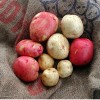 The Irish potato is a cool-season crop. A recently grown and harvested potato exhibits different flavor profiles from one that has been in storage or on a grocery shelf for an extended period. For example, in storage, the starches in potatoes convert to sugars, resulting in a less desirable texture and taste. “New” potato flavor can be achieved in the home garden by following a few growing recommendations. This 9-page fact sheet was written by Christian T. Christensen, Libby R. Rens, Jeffrey E. Pack, Lincoln Zotarelli, Chad Hutchinson, Wendy Dahl, Doug Gergela, and James M. White, and published by the UF Department of Horticultural Sciences, April 2013.
The Irish potato is a cool-season crop. A recently grown and harvested potato exhibits different flavor profiles from one that has been in storage or on a grocery shelf for an extended period. For example, in storage, the starches in potatoes convert to sugars, resulting in a less desirable texture and taste. “New” potato flavor can be achieved in the home garden by following a few growing recommendations. This 9-page fact sheet was written by Christian T. Christensen, Libby R. Rens, Jeffrey E. Pack, Lincoln Zotarelli, Chad Hutchinson, Wendy Dahl, Doug Gergela, and James M. White, and published by the UF Department of Horticultural Sciences, April 2013.
http://edis.ifas.ufl.edu/hs183
Cornsilk Fly (suggested common name), Euxesta stigmatias Loew (Insecta: Diptera: Otitidae) (EENY224/IN381)
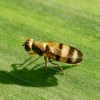 ‘Cornsilk flies’ are attractive, medium to dark metallic green to black colored flies with distinctive wing patterns and wing flapping behavior. They are commonly found throughout Florida’s agricultural communities. Their normally saprophytic life style belies their destructive nature when it comes to their preference for sweet corn ears. Four species of ‘cornsilk flies’ are known to attack corn in Florida: Chaetopsis massyla (Walker), Euxesta annonae (Fabricius), Euxesta eluta Loew, and Euxesta stigmatias Loew. This 8-page fact sheet was written by Gregg S. Nuessly and John L. Capinera, and published by the UF Department of Entomology and Nematology, April 2013. #UFBugs
‘Cornsilk flies’ are attractive, medium to dark metallic green to black colored flies with distinctive wing patterns and wing flapping behavior. They are commonly found throughout Florida’s agricultural communities. Their normally saprophytic life style belies their destructive nature when it comes to their preference for sweet corn ears. Four species of ‘cornsilk flies’ are known to attack corn in Florida: Chaetopsis massyla (Walker), Euxesta annonae (Fabricius), Euxesta eluta Loew, and Euxesta stigmatias Loew. This 8-page fact sheet was written by Gregg S. Nuessly and John L. Capinera, and published by the UF Department of Entomology and Nematology, April 2013. #UFBugs
http://edis.ifas.ufl.edu/in381
Florida Crop/Pest Management Profile: Cabbage (CIR1256/PI042)
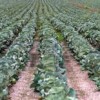 Florida’s cabbage production is exclusively for the fresh market. The higher-quality cabbage obtained during the late fall, winter, and early spring months in Florida allows the shipment of fresh cabbage to areas of the United States that cannot produce cabbage during that part of the year. This 18-page fact sheet summarizes production practices and pest management for cabbage production in Florida. Written by Wael M. Elwakil and Mark Mossler, and published by the UF Department of Agronomy, April 2013.
Florida’s cabbage production is exclusively for the fresh market. The higher-quality cabbage obtained during the late fall, winter, and early spring months in Florida allows the shipment of fresh cabbage to areas of the United States that cannot produce cabbage during that part of the year. This 18-page fact sheet summarizes production practices and pest management for cabbage production in Florida. Written by Wael M. Elwakil and Mark Mossler, and published by the UF Department of Agronomy, April 2013.
http://edis.ifas.ufl.edu/pi042
Produccion de Hortalizas en Ambientes Protegidos: Medios de Siembra y Contenedores (HS1216)
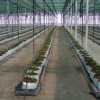 Este documento contiene informacion sobre producción en suelos: Desinfección, mejoramiento, cultivos de cobertura, acolchados (mulches); y tipos de contenedores. This 6-page fact sheet was written by Bielinski M. Santos and Henner A. Obregon-Olivas, and published by the UF Department of Horticultural Sciences, March 2013.
Este documento contiene informacion sobre producción en suelos: Desinfección, mejoramiento, cultivos de cobertura, acolchados (mulches); y tipos de contenedores. This 6-page fact sheet was written by Bielinski M. Santos and Henner A. Obregon-Olivas, and published by the UF Department of Horticultural Sciences, March 2013.
http://edis.ifas.ufl.edu/hs1216
Managing Diamide Resistance in Florida Tomato (ENY867/IN978)
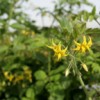 As with any insecticide, repeated use of diamide insecticides on successive generations of the same pest may lead to the development of insecticide resistance. In order to avoid the development of resistance to diamides by targeted pests of tomato, group 28 insecticides, including diamides, must be rotated with insecticides possessing different modes of action. This 3-page fact sheet was written by Hugh A. Smith, and published by the UF Department of Entomology and Nematology, February 2013.
As with any insecticide, repeated use of diamide insecticides on successive generations of the same pest may lead to the development of insecticide resistance. In order to avoid the development of resistance to diamides by targeted pests of tomato, group 28 insecticides, including diamides, must be rotated with insecticides possessing different modes of action. This 3-page fact sheet was written by Hugh A. Smith, and published by the UF Department of Entomology and Nematology, February 2013.
http://edis.ifas.ufl.edu/in978
Subsurface Drip Irrigation (SDI) for Enhanced Water Distribution: SDI – Seepage Hybrid System (HS1217)
 In terms of water use efficiency, the traditional seepage irrigation systems commonly used in areas with high water tables are one of the most inefficient methods of irrigation, though some irrigation management practices can contribute to better soil moisture uniformity. Subsurface drip irrigation systems apply water below the soil surface by microirrigation, improving the water distribution and time required to raise the water table for seepage irrigation. This 6-page fact sheet was written by Lincoln Zotarelli, Libby Rens, Charles Barrett, Daniel J. Cantliffe, Michael D. Dukes, Mark Clark, and Steven Lands, and published by the UF Department of Horticultural Sciences, March 2013.
In terms of water use efficiency, the traditional seepage irrigation systems commonly used in areas with high water tables are one of the most inefficient methods of irrigation, though some irrigation management practices can contribute to better soil moisture uniformity. Subsurface drip irrigation systems apply water below the soil surface by microirrigation, improving the water distribution and time required to raise the water table for seepage irrigation. This 6-page fact sheet was written by Lincoln Zotarelli, Libby Rens, Charles Barrett, Daniel J. Cantliffe, Michael D. Dukes, Mark Clark, and Steven Lands, and published by the UF Department of Horticultural Sciences, March 2013.
http://edis.ifas.ufl.edu/hs1217
Reducing Fumigant Application Rates and Soil Emissions with Plastic Mulch Technology (ENY046/IN403)
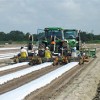 With the new fumigant regulations and rising cost of crop production, including fumigants, it would be desirable to reduce the standard use rate of soil fumigants. The use of higher-barrier, gas-impermeable mulches may make it possible to reduce fumigant application rates by helping to contain the fumigant longer within the soil and reduce overall emissions into the atmosphere. The results of field studies show that fumigant application rates can be reduced by 20 to as much as 40% through the use of virtually impermeable or the more gas-tight TIF mulch films at the time of application. This 5-page fact sheet was written by J. W. Noling, and published by the UF Department of Entomology and Nematology, March 2013.
With the new fumigant regulations and rising cost of crop production, including fumigants, it would be desirable to reduce the standard use rate of soil fumigants. The use of higher-barrier, gas-impermeable mulches may make it possible to reduce fumigant application rates by helping to contain the fumigant longer within the soil and reduce overall emissions into the atmosphere. The results of field studies show that fumigant application rates can be reduced by 20 to as much as 40% through the use of virtually impermeable or the more gas-tight TIF mulch films at the time of application. This 5-page fact sheet was written by J. W. Noling, and published by the UF Department of Entomology and Nematology, March 2013.
http://edis.ifas.ufl.edu/in403
Allelopathy: How Plants Suppress Other Plants (HS944/HS186)
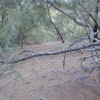 Allelopathy refers to the beneficial or harmful effects of one plant on another plant, both crop and weed species, from the release of biochemicals, known as allelochemicals, from plant parts by leaching, root exudation, volatilization, residue decomposition, and other processes in both natural and agricultural systems. This 5-page fact sheet introduces the concept of allelopathy and mentions potential applications as an alternative weed management strategy. Written by James J. Ferguson, Bala Rathinasabapathi, and Carlene A. Chase, and published by the UF Department of Horticultural Sciences, March 2013.
Allelopathy refers to the beneficial or harmful effects of one plant on another plant, both crop and weed species, from the release of biochemicals, known as allelochemicals, from plant parts by leaching, root exudation, volatilization, residue decomposition, and other processes in both natural and agricultural systems. This 5-page fact sheet introduces the concept of allelopathy and mentions potential applications as an alternative weed management strategy. Written by James J. Ferguson, Bala Rathinasabapathi, and Carlene A. Chase, and published by the UF Department of Horticultural Sciences, March 2013.
http://edis.ifas.ufl.edu/hs186
Fumigant Nematicides Registered for Vegetable Crop Use in Florida (ENY064/IN980)
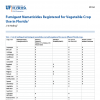 This 3-page fact sheet lists of multispectrum fumigant nematicides currently registered for use on different Florida crops (Table 1); their maximum rates and specific details for field application (Table 2); and a generalized summary of maximum use rate and relative effectiveness of various soil fumigants for nematode, soilborne disease, and weed control in Florida (Table 3). Written by J. W. Noling, and published by the UF Department of Entomology and Nematology, January 2013.
This 3-page fact sheet lists of multispectrum fumigant nematicides currently registered for use on different Florida crops (Table 1); their maximum rates and specific details for field application (Table 2); and a generalized summary of maximum use rate and relative effectiveness of various soil fumigants for nematode, soilborne disease, and weed control in Florida (Table 3). Written by J. W. Noling, and published by the UF Department of Entomology and Nematology, January 2013.
http://edis.ifas.ufl.edu/in980
Thousand Cankers Disease: A Threat to Black Walnut in Florida (FOR308/FR376)
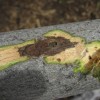 Thousand cankers disease of walnut is a tree disease of the edible nut-producing and ornamental tree, black walnut. The first diseased trees were observed in New Mexico in the 1990s. The disease has since spread to most of the western states. Until 2009, diseased black walnut trees were only found outside of the natural range of black walnut, which occurs from the mid-Atlantic states to just west of the Mississippi River. In 2009, it was found near Knoxville, Tennessee; it has since spread to Pennsylvania and Virginia. It is possible that within the next decade this disease could naturally spread to Florida. However, if people continue to move TCD infested walnut logs from place to place, this disease could arrive in Florida tomorrow. This 3-page fact sheet was written by Don Spence and Jason A. Smith, and published by the UF Department of School of Forest Resources and Conservation, February 2013.
Thousand cankers disease of walnut is a tree disease of the edible nut-producing and ornamental tree, black walnut. The first diseased trees were observed in New Mexico in the 1990s. The disease has since spread to most of the western states. Until 2009, diseased black walnut trees were only found outside of the natural range of black walnut, which occurs from the mid-Atlantic states to just west of the Mississippi River. In 2009, it was found near Knoxville, Tennessee; it has since spread to Pennsylvania and Virginia. It is possible that within the next decade this disease could naturally spread to Florida. However, if people continue to move TCD infested walnut logs from place to place, this disease could arrive in Florida tomorrow. This 3-page fact sheet was written by Don Spence and Jason A. Smith, and published by the UF Department of School of Forest Resources and Conservation, February 2013.
http://edis.ifas.ufl.edu/fr376
Costos Estimados en el 2010 para Establecer y Producir Pitaya (Fruta Dragón) en el Sur de Florida (FE921)
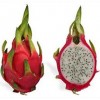 Como consecuencia de la creciente competencia extranjera y la disminución de rendimientos de los productos agrícolas tradicionales, muchos productores en el Sur de la Florida se han embarcado en una búsqueda agresiva de productos agrícolas que sean alternativas viables. Un producto que ha llamado la atención es la pitaya, una especie de cactus trepador autóctona de las regiones de bosques tropicales de México, Centroamérica y América del Sur. De menos de 50 hectáreas plantadas en la Florida en fecha tan reciente como 2006, la producción se ha multiplicado por seis y ahora se estima en alrededor de 320 acres. This 6-page fact sheet was written by Edward A. Evans, Jordan Huntley, Jonathan Crane, and Allen F. Wysocki, and published by the UF Department of Food and Resource Economics, March 2013.
Como consecuencia de la creciente competencia extranjera y la disminución de rendimientos de los productos agrícolas tradicionales, muchos productores en el Sur de la Florida se han embarcado en una búsqueda agresiva de productos agrícolas que sean alternativas viables. Un producto que ha llamado la atención es la pitaya, una especie de cactus trepador autóctona de las regiones de bosques tropicales de México, Centroamérica y América del Sur. De menos de 50 hectáreas plantadas en la Florida en fecha tan reciente como 2006, la producción se ha multiplicado por seis y ahora se estima en alrededor de 320 acres. This 6-page fact sheet was written by Edward A. Evans, Jordan Huntley, Jonathan Crane, and Allen F. Wysocki, and published by the UF Department of Food and Resource Economics, March 2013.
http://edis.ifas.ufl.edu/fe921
Opciones de gestion agronomica para la variabilidad y para el cambio climatico: El riego localizado (HS1212)
 Esta publicación se enfoca en el uso del riego localizado para mejorar los sistemas de producción. This 5-page fact sheet was written by Lincoln Zotarelli, Clyde Fraisse, and Daniel Dourte, and published by the UF Department of Horticultural Sciences, January 2013.
Esta publicación se enfoca en el uso del riego localizado para mejorar los sistemas de producción. This 5-page fact sheet was written by Lincoln Zotarelli, Clyde Fraisse, and Daniel Dourte, and published by the UF Department of Horticultural Sciences, January 2013.
http://edis.ifas.ufl.edu/hs1212
Trastornos fisiologicos de la papa: Centro marron y Corazon hueco (HS1214)
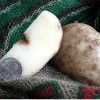 El centro marrón y el corazón hueco son trastornos fisiológicos internos no-infecciosos del tubérculo de la papa. Un centro marrón (también llamado corazón incipiente y hueco, corazón marrón o centro de azúcar) se caracteriza por una región muerta en las células de la médula de los tubérculos lo que resulta en un tejido de color marrón. This 3-page fact sheet was written by L. Zotarelli, C. Hutchinson, S. Byrd, D. Gergela, y D. L. Rowland, and published by the UF Department of Horticultural Sciences, January 2013.
El centro marrón y el corazón hueco son trastornos fisiológicos internos no-infecciosos del tubérculo de la papa. Un centro marrón (también llamado corazón incipiente y hueco, corazón marrón o centro de azúcar) se caracteriza por una región muerta en las células de la médula de los tubérculos lo que resulta en un tejido de color marrón. This 3-page fact sheet was written by L. Zotarelli, C. Hutchinson, S. Byrd, D. Gergela, y D. L. Rowland, and published by the UF Department of Horticultural Sciences, January 2013.
http://edis.ifas.ufl.edu/hs1214
Manejo de malezas en las papas (HS1213)
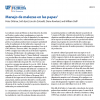 Las malezas causan problemas en la producción de patata en Florida y puede reducir rendimientos a través de competencia directa por la luz, la humedad y los nutrientes, o por albergar insectos y enfermedades que atacan las patatas. This 4-page fact sheet was written by Peter Dittmar, Seth Byrd, Lincoln Zotarelli, Diane Rowland, and William Stall, and published by the UF Department of Horticultural Sciences, January 2013.
Las malezas causan problemas en la producción de patata en Florida y puede reducir rendimientos a través de competencia directa por la luz, la humedad y los nutrientes, o por albergar insectos y enfermedades que atacan las patatas. This 4-page fact sheet was written by Peter Dittmar, Seth Byrd, Lincoln Zotarelli, Diane Rowland, and William Stall, and published by the UF Department of Horticultural Sciences, January 2013.
http://edis.ifas.ufl.edu/hs1213
Trastornos fisiologicos de la papa: Grietas de Crecimiento (HS1211)
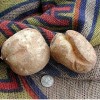 Las grietas de crecimiento son un trastorno fisiológigo externo no infeccioso del tubérculo de la papa en el que el tubérculo se agrieta durante el crecimiento. La bendidura se cura, pero deja una fisura en el tubérculo. This 3-page fact sheet was written by L. Zotarelli, C. Hutchinson, S. Byrd, D. Gergela, y D. L. Rowland, and published by the UF Department of Horticultural Sciences, January 2013.
Las grietas de crecimiento son un trastorno fisiológigo externo no infeccioso del tubérculo de la papa en el que el tubérculo se agrieta durante el crecimiento. La bendidura se cura, pero deja una fisura en el tubérculo. This 3-page fact sheet was written by L. Zotarelli, C. Hutchinson, S. Byrd, D. Gergela, y D. L. Rowland, and published by the UF Department of Horticultural Sciences, January 2013.
http://edis.ifas.ufl.edu/hs1211